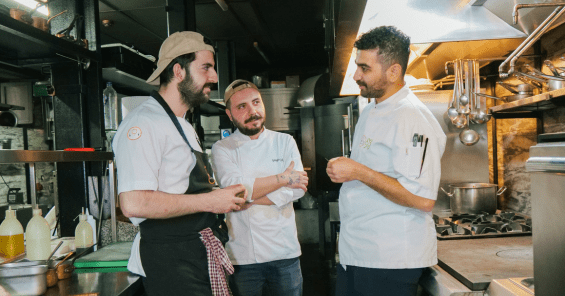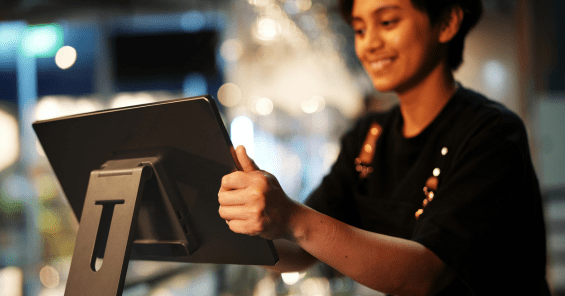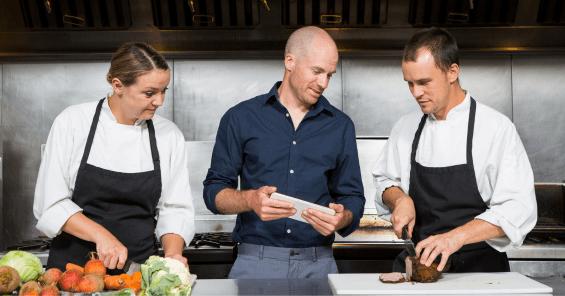

How to Control (and Even Lower) Restaurant Labor Cost
Restaurant labor costs are an important metric you'll want to keep an eye on. As a restaurant operator, you need to factor labor costs into menu prices to ensure that you are making enough revenue. Learn about to calculate, manage, and lower labor costs for your restaurant,
People are the heart of the hospitality sector. From innovative chefs designing new dishes to servers on the front line of customer relationships, restaurant labor are the shoulders that carry your brand — and so are restaurant labor costs.At the end of the day, if you want the best people in your restaurant, you have to reward them. Particularly in today’s labor market, the minimum wage isn't always enough to attract the best talent. It is an employee market, and quality labor comes with a labor cost. Not just in terms of wages, but also the cost of a thorough hiring process, training and onboarding, and benefits packages such as health insurance and paid vacation time.
Six Foolproof Restaurant Cost Management Techniques
Maximize your restaurant's profitability with this essential eBook. 📈 Learn foolproof cost management techniques and unlock proven strategies for supplier negotiations and brand loyalty. 👩🍳🤝

Your restaurant labor cost percentage likely makes up a significant portion of your operating cost, but your total labor cost may vary depending on factors such as your type of operation, labor laws in your location, and your total sales.
What Makes Restaurant Labor Cost Such An Important Metric?
In the restaurant industry, businesses typically operate on a low profit margin, with high COGS (cost of goods sold) and direct labor costs. This makes it all the more important to keep a close eye on your labor cost percentage. As with food cost percentage, labor cost percentage factors in the fixed costs (for example, salaries) and variable costs (for example, paid days off) of labor, as a percentage of gross profit, or total sales.
As a restaurant operator, you need to factor labor costs into menu prices to ensure that you are making enough revenue to cover not only COGS and direct costs, but all costs across your restaurant, which include labor and overheads. Equally, more labor-intensive dishes such as steaks, which have to be cooked to order, may be priced accordingly.
How Do You Calculate Labor Costs in a Restaurant?
Labor costs typically make up between 30% and 35% of your revenue, though that may vary on they type of restaurant. For example, fast-casual restaurants may spend less on labor than more upscale restaurants because they offer a lower level of table service and dishes are typically faster and less complex to prepare and cook. Research from BDO outlines the typical labor cost percentage of different restaurant styles:
- Quick service: 32%
- Fast-casual: 29%
- Casual: 34%
- Upscale casual: 31%
Actual labor costs may include:
- Salaries and wages, including overtime
- Hiring processes, training, and onboarding
- Bonuses and other incentives
- Payroll taxes
- Health insurance
- Paid time off for vacation and sick leave
Add all this together to see your total labor cost.
There are two ways to calculate restaurant labor cost percentage: Labor as a percentage of sales and labor as a percentage of total operating costs.
Your restaurant labor as a percent of sales is your actual labor cost divided by your revenue. Calculate your total labor cost, then divide by revenue for a given time period:
Total labor cost / Total revenue = Labor cost percentage of sales
Your restaurant labor as a percentage of total operating costs is your actual labor cost divided by your total operating costs. Your total operating costs include labor, food and other COGS, rent utilities, taxes, marketing, and any other costs associated with running your restaurant:
Total labor cost / Total operating costs = Labor cost percentage of operating costs
You can also calculate your labor cost percentage per hour, by adding up the total labor costs for a given time period, then dividing by the number of restaurant hours in that time period. Knowing your labor cost percentage per hour can be a good way to budget future labor costs and project future spending.
Total labor cost / Operating hours = labor cost percentage per hour
Prime cost — COGS plus labor cost — can also be used to give you a measure of the efficiency and overall financial health of your restaurant. Labor, food, and other operating costs, such as rent, make up your total operating cost. Together, they should make up around 60% of total revenue.
How to Manage, Control, and Lower Restaurant Labor Cost
The past few years have seen rising labor costs, associated with pandemic-triggered labor shortages and rising food costs associated with supply chain issues. Restaurant owners and managers have been forced to raise menu prices, or control labor costs with fewer workers on each shift. Staffing software can help you to control restaurant labor costs and overall restaurant costs in a number of key ways.
Categorizing Labor Costs
Your employee scheduling software should be able to calculate labor productivity based on labor hours, shift times, and revenue. But how much does that tell you about the performance of individual departments?
You can use employee scheduling software to categorize employees into teams — for example, front of house, back of house, and management — so you can drill down and pinpoint any issues based on the labor cost for individual teams. While total labor cost may be creeping up, you can see exactly where in your restaurant that additional spend is going, and determine whether changes need to be made to tasks and processes.
Predictive Scheduling
One way to reduce total labor cost is to reevaluate shifts regularly and to use predictive scheduling based on past performance, sales, and requirements for labor management. Employee scheduling software helps you optimize your restaurant labor to get the most from your staff. Keep an eye on potential overtime creeping in, and use scheduling systems to watch for employees clocking in early or late.
Employee Satisfaction
Employee engagement is a key component of employee retention. Investing in staff training can improve engagement and loyalty, as well as improve job performance.
Employee scheduling software can track which staff members have received which training. This can also be used for compliance purposes, for example, to track when employees last received compulsory food hygiene certification, and can encourage cross-skilling, so you have more availability and flexibility in schedules.
Software Integration
Integration with other restaurant technology software, such as POS and inventory management can reduce restaurant labor costs by making processes more consistent. This can make day-to-day tasks easier, faster, and more efficient, so fewer staff members are required in each role. This improved efficiency also has the knock-on effect of improving employee satisfaction, which reduces employee turnover and hiring costs.
—
The hospitality business is a people-centric business. From labor-intensive BOH kitchen roles to FOH customer-facing roles, employees need to be at the center of any restaurant business. That comes across in budgets: labor costs typically make up one of the highest proportions of spend in hospitality businesses. There are ways to manage and control labor costs in restaurants though. From keeping employees engaged and satisfied and decreasing turnover to advanced predictive scheduling software that keeps shifts lean and efficient, technology is leading the way when it comes to restaurant labor.

Automate your inventory management, control food costs, and streamline back-of-house processes effortlessly with MarketMan's restaurant software. MarketMan enables restaurateurs to eliminate manual tasks, reduce waste, and drive success through strategic insights. Experience a new level of restaurant efficiency. Schedule a demo now to learn how MarketMan can revolutionize your operations!
Author
Contributors
If you have any questions or need help, feel free to reach out
Don't miss out on maximizing your restaurant's profits! Calculate your ROI with MarketMan
Join over 18,000 restaurants and get the hottest restaurant tips delivered to your inbox
You may also be interested in
Ready to get started?
Talk to a restaurant expert today and learn how MarketMan can help your business






